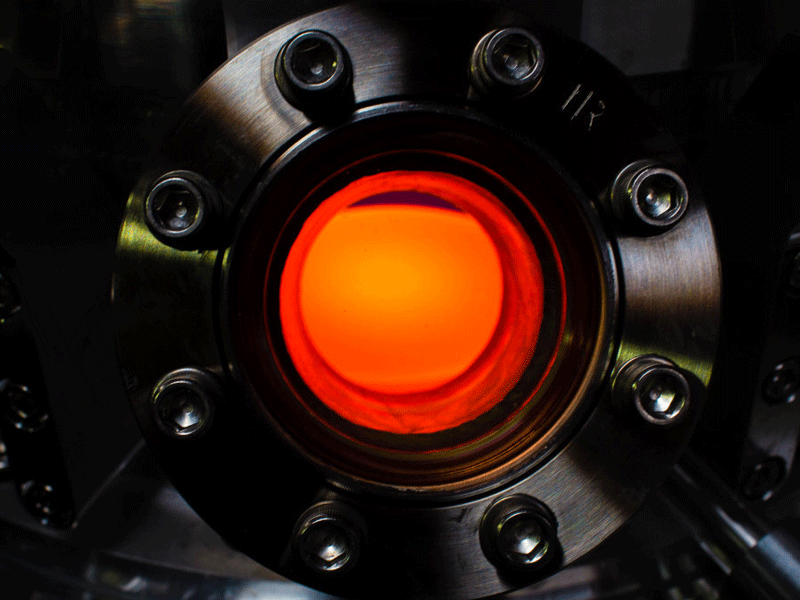10 billionaires and Leonardo DiCaprio just invested in a startup that claims it can grow hundreds of real diamonds in 2 weeks

Diamond Foundry has spent the last three years quietly working on an ambitious project.
The Santa Clara startup, created by Nanosolar founder Martin Roscheisen, wanted to grow "real" diamonds in a lab. Unlike synthetic diamonds, these would be hatched from a sliver of a natural, mined diamond as the substrate.
After two years of experiments with failed diamond-growing reactors, Roscheisen's team says it cracked the code. Now the company claims to be able to grow hundreds of diamonds that are up to nine carats in just two weeks in a lab.
The breakthrough was enough to convince ten billionaires and members of Silicon Valley tech royalty to invest. Diamond Foundry has closed three rounds of financing from individuals including actor Leonardo DiCaprio, Twitter/Medium founder Evan Williams, Zynga founder Mark Pincus, One Kings Lane co-founder Alison Pincus, SUN Microsystems founder Andreas Bechtolsheim, Facebook co-founder Andrew McCollum, former Facebook COO Owen van Natta, Marc Benioff's private investment manager Mark Goldstein, Sequoia Capital's David Spector, former eBay President Jeff Skoll, Scott Banister, Vast Ventures, and many others. DiCaprio starred in the movie "Blood Diamond" and has since taken on some related activism against the industry, which has been heavily criticized for its negative environmental impact and child labor.
The company says it has raised less than $100 million to date — which is significant considering the startup just publicly launched on Wednesday morning. Roscheisen, the company's CEO, was in the same PhD program at Stanford as Google's Larry Page and Sergey Brin.
While Diamond Foundry is making the diamonds, it isn't designing jewelry. Instead, it has a marketplace with about 200 partnering designers who buy the crystals from Diamond Foundry, put them in their rings, bracelets and necklaces, then sell them straight to consumers online. The designer purchases are currently the startup's only source of income.
By buying diamonds through Diamond Foundry, the designers can avoid giving a cut of the money to traditional outlets like De Beers or Tiffany's. That doesn't mean Diamond Foundry is selling its jewels at a discount though. While synthetic diamonds tend to cost about 30% less than naturally made and mined diamonds, Diamond Foundry says its product will cost about the same if not more than market value.

But are Diamond Factory and its science-fiction-sounding vision the real deal?
We grilled Diamond Foundry about how their diamonds are made, and how they're different than synthetic diamonds. Here's how the company explained it.
The process of making a diamond: an 8,000 degree reactor
The startup says it is "culturing diamonds," and asserts its process does not yield traditional synthetic diamonds but "100% pure diamonds" with the same molecular imperfections of the diamonds you'd find in the earth.
An investor in Diamond Foundry likened the process to growing a plant. You need a seed from another plant for a new one to grow. In this case, a small slice of a natural diamond is used as the base, or "seed," to grow new layers on top of the crystal until new diamonds are formed. Then that "seed" base is scraped off and reused to grow new diamonds.
RELATED: Here's a crater of diamonds:
These diamonds are grown in a very hot reactor that reaches about 8,000 degrees Farenheit.
"Diamonds are born from a fiery heat, so we set out to create a plasma of unprecedented energy density," the company vaguely explains.

The company says it discovered a plasma that allows atoms to attach themselves to the thin slice of earth-extracted diamond. The atoms then stack on top of that natural diamond, layer by layer, until a pure, jewelry-grade diamond is formed.
Hundreds of these diamonds can be formed at once in just a few weeks, the largest so far weighing nine carats.

How are these diamonds any different than synthetic diamonds?
The difference comes down to the quality of the diamonds Roscheisen's lab produces and the process used to make them.
"There is a big difference in how the technology works," a company spokesperson explains. "The difference is that we add atoms to natural diamonds, and in fact our process would not work without the natural diamond as a substrate. The synthetic diamonds in the market are made using high pressure without any substrate for growth."
In terms of quality, diamonds are rated by something called the GIA, which examines color, clarity, cut, and carat weight. The GIA rates synthetic diamonds, but it uses fewer grading categories in terms of their color and clarity. Diamond Foundry, however, says its diamonds were rated by a GIA-trained gemologist who concluded they were "true jewelry white."
If hundreds of high quality diamonds can be made in just two weeks, won't that make diamonds less rare?
Diamond Foundry says that because the industry is so large (roughly $30 billion), even if it's producing hundreds of diamonds routinely in its lab, it won't be able to make enough of them to seriously impact the overall price and demand for diamonds.
Another selling point for the startup is consumers won't have to worry about how their diamonds were made.
"[Ours] are pure diamond, just like industrially mined diamonds," Diamond Foundry insists. "But ethically and morally pure as well."
NOW WATCH: The 19-year-old model who quit Instagram explains the lies behind her most popular photo
See Also:
